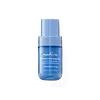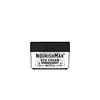What's inside
What's inside
 Key Ingredients
Key Ingredients

 Benefits
Benefits

 Concerns
Concerns

 Ingredients Side-by-side
Ingredients Side-by-side

Water
Skin ConditioningPropanediol
SolventCaprylic/Capric Triglyceride
MaskingGlycerin
HumectantPolyacrylamide
Cetearyl Alcohol
EmollientCocoglycerides
EmollientPotassium Cetyl Phosphate
EmulsifyingDimethicone
EmollientC13-14 Isoparaffin
EmollientLaureth-7
EmulsifyingSodium Hyaluronate
HumectantMenthyl Lactate
MaskingTocopheryl Acetate
AntioxidantPhospholipids
Skin ConditioningRetinol
Skin ConditioningGlyceryl Diretinoate
Skin ConditioningRetinyl Linoleate
Skin ConditioningCopernicia Cerifera Wax
Steareth-20
CleansingChrysin
Skin ConditioningPalmitoyl Tetrapeptide-7
Skin ConditioningPalmitoyl Oligopeptide
CleansingN-Hydroxysuccinimide
Skin ConditioningOryza Sativa Extract
AbsorbentZerumbone
Skin ConditioningButylene Glycol
HumectantMyristoyl Pentapeptide-16
Skin ConditioningMyristoyl Nonapeptide-3
Skin ConditioningCaprylyl Glycol
EmollientPhenoxyethanol
PreservativeWater, Propanediol, Caprylic/Capric Triglyceride, Glycerin, Polyacrylamide, Cetearyl Alcohol, Cocoglycerides, Potassium Cetyl Phosphate, Dimethicone, C13-14 Isoparaffin, Laureth-7, Sodium Hyaluronate, Menthyl Lactate, Tocopheryl Acetate, Phospholipids, Retinol, Glyceryl Diretinoate, Retinyl Linoleate, Copernicia Cerifera Wax, Steareth-20, Chrysin, Palmitoyl Tetrapeptide-7, Palmitoyl Oligopeptide, N-Hydroxysuccinimide, Oryza Sativa Extract, Zerumbone, Butylene Glycol, Myristoyl Pentapeptide-16, Myristoyl Nonapeptide-3, Caprylyl Glycol, Phenoxyethanol
Water
Skin ConditioningSimmondsia Chinensis Seed Oil
EmollientPolyacrylamide
C13-14 Isoparaffin
EmollientSqualane
EmollientCaffeine
Skin ConditioningCeramide NP
Skin ConditioningPeucedanum Graveolens Extract
TonicGlycine Soja Oil
EmollientPhytonadione Epoxide
AstringentPrunus Armeniaca Kernel Oil
MaskingSodium Hyaluronate
HumectantRetinol
Skin ConditioningArnica Montana Flower Extract
MaskingPalmitoyl Tetrapeptide-7
Skin ConditioningAcetyl Hexapeptide-8
HumectantSaccharomyces/Copper Ferment
Skin ConditioningSaccharomyces/Silicon Ferment
Skin ConditioningTocopherol
AntioxidantN-Hydroxysuccinimide
Skin ConditioningChrysin
Skin ConditioningPhenoxyethanol
PreservativeGlycerin
HumectantButylene Glycol
HumectantLaureth-7
EmulsifyingEthylhexylglycerin
Skin ConditioningCaprylic/Capric Triglyceride
MaskingPolysorbate 20
EmulsifyingCarbomer
Emulsion StabilisingCetyl Palmitate
EmollientLaureth-23
CleansingPotassium Sorbate
PreservativeTrideceth-6 Phosphate
EmulsifyingTriethanolamine
BufferingSteareth-20
CleansingWater, Simmondsia Chinensis Seed Oil, Polyacrylamide, C13-14 Isoparaffin, Squalane, Caffeine, Ceramide NP, Peucedanum Graveolens Extract, Glycine Soja Oil, Phytonadione Epoxide, Prunus Armeniaca Kernel Oil, Sodium Hyaluronate, Retinol, Arnica Montana Flower Extract, Palmitoyl Tetrapeptide-7, Acetyl Hexapeptide-8, Saccharomyces/Copper Ferment, Saccharomyces/Silicon Ferment, Tocopherol, N-Hydroxysuccinimide, Chrysin, Phenoxyethanol, Glycerin, Butylene Glycol, Laureth-7, Ethylhexylglycerin, Caprylic/Capric Triglyceride, Polysorbate 20, Carbomer, Cetyl Palmitate, Laureth-23, Potassium Sorbate, Trideceth-6 Phosphate, Triethanolamine, Steareth-20
Ingredients Explained
These ingredients are found in both products.
Ingredients higher up in an ingredient list are typically present in a larger amount.
Butylene Glycol (or BG) is used within cosmetic products for a few different reasons:
Overall, Butylene Glycol is a safe and well-rounded ingredient that works well with other ingredients.
Though this ingredient works well with most skin types, some people with sensitive skin may experience a reaction such as allergic rashes, closed comedones, or itchiness.
Learn more about Butylene GlycolThis ingredient is also known as "C13-14 Isoalkane".
C13-14 Isoparaffin is created from petroleum-based mineral oils. It is an emollient and helps thicken a product.
As an emollient, it helps keep the skin soft and smooth by creating a barrier on top. This barrier traps moisture in, keeping the skin hydrated.
C13-14 Isoparaffin may not be fungal-acne safe.
Learn more about C13-14 IsoparaffinThis ingredient is an emollient, solvent, and texture enhancer. It is considered a skin-softener by helping the skin prevent moisture loss.
It helps thicken a product's formula and makes it easier to spread by dissolving clumping compounds.
Caprylic Triglyceride is made by combining glycerin with coconut oil, forming a clear liquid.
While there is an assumption Caprylic Triglyceride can clog pores due to it being derived from coconut oil, there is no research supporting this.
Learn more about Caprylic/Capric TriglycerideWe don't have a description for Chrysin yet.
Glycerin is already naturally found in your skin. It helps moisturize and protect your skin.
A study from 2016 found glycerin to be more effective as a humectant than AHAs and hyaluronic acid.
As a humectant, it helps the skin stay hydrated by pulling moisture to your skin. The low molecular weight of glycerin allows it to pull moisture into the deeper layers of your skin.
Hydrated skin improves your skin barrier; Your skin barrier helps protect against irritants and bacteria.
Glycerin has also been found to have antimicrobial and antiviral properties. Due to these properties, glycerin is often used in wound and burn treatments.
In cosmetics, glycerin is usually derived from plants such as soybean or palm. However, it can also be sourced from animals, such as tallow or animal fat.
This ingredient is organic, colorless, odorless, and non-toxic.
Glycerin is the name for this ingredient in American English. British English uses Glycerol/Glycerine.
Learn more about GlycerinLaureth-7 is created by the ethoxylation of lauryl alcohol using ethylene oxide. Lauryl alcohol is a fatty alcohol with hydrating properties.
This ingredient is an emulsifier and cleansing ingredient. As an emulsifier, it is used to prevent ingredients from separating. It also helps cleanse the skin by gathering dirt, oil, and pollutants to be rinsed away.
We don't have a description for N-Hydroxysuccinimide yet.
Palmitoyl Tetrapeptide-7 (formerly Palmitoyl Tetrapeptide-3) is a lab-made peptide with anti-inflammatory and skin-repairing benefits. It's made up of four amino acids (glycine, glutamine, proline, and arginine) and palmitic acid (which helps it penetrate skin more effectively).
This ingredient helps reduce inflammation by limiting the production of interleukin-6 (IL-6), a chemical that triggers inflammatory responses, particularly after UV exposure.
Less inflammation = slower collagen breakdown and a longer-lasting, youthful appearance.
Palmitoyl Tetrapeptide-7 also stimulates collagen production and supports a healthier skin barrier.
Over time, this can improve skin firmness, hydration, and reduce the appearance of fine lines. It’s commonly paired with Palmitoyl Tripeptide-1 in the well-known Matrixyl 3000 complex for enhanced anti-aging effects.
This ingredient has been shown to be effective and safe in cosmetic use and you'll typically find it in small amounts (less than 0.01%).
Due to its palmitic acid base, it may not be safe for Malassezia folliculitis.
Read more about other common types of peptides here:
Learn more about Palmitoyl Tetrapeptide-7Phenoxyethanol is a preservative that has germicide, antimicrobial, and aromatic properties. Studies show that phenoxyethanol can prevent microbial growth. By itself, it has a scent that is similar to that of a rose.
It's often used in formulations along with Caprylyl Glycol to preserve the shelf life of products.
Polyacrylamide is a synthetic polymer. It is used to stabilize products and bind ingredients. When hydrated, Polyacrylamide forms a soft gel.
Polyacrylamide is low-toxicity. If source properly, it is deemed safe to use in cosmetics.
It should be noted the precursor to Polyacrylamide is acrylamide. Acrylamide is a carcinogen. Most reputable sources of Polyacrylamide will screen for residual acrylamide to make sure the count is in a safe range. Acrylamide is not able to be absorbed through the skin.
We recommend speaking with a professional if you have concerns.
Learn more about PolyacrylamideRetinol is a gold-standard ingredient for anti-aging. It is a form of Vitamin A and belongs to the class of retinoids that also includes tretinoin.
Why is retinol famous?
It has the most scientific studies backing up its skin benefits out of all the non-prescription ingredients.
Retinol is proven to:
This is why retinol is effective at removing wrinkles, fading dark spots, treating acne, and reducing the appearance of pores.
Studies show retinol is less effective when exposed to UV. Be sure to look for appropriate packaging to keep your retinol potent (similar to Vitamin C).
Using retinol or any retinoids will increase sun-sensitivity in the first few months. Though studies show retinoids increase your skin's natural SPF with continuous use, it is best to always wear sunscreen and sun-protection.
We recommend speaking with a medical professional about using this ingredient during pregnancy.
Retinol may cause irritation in some people, so be sure to patch test. Experts recommend 'ramping up' retinol use: start using this ingredient once a week and work up to using it daily.
Read about Tretinoin
Learn more about RetinolSodium Hyaluronate is hyaluronic acid's salt form. It is commonly derived from the sodium salt of hyaluronic acid.
Like hyaluronic acid, it is great at holding water and acts as a humectant. This makes it a great skin hydrating ingredient.
Sodium Hyaluronate is naturally occurring in our bodies and is mostly found in eye fluid and joints.
These are some other common types of Hyaluronic Acid:
Learn more about Sodium HyaluronateSteareth-20 is a waxy compound used to emulsify ingredients. It is created from stearyl alcohol.
It possesses surfactant properties. This means it reduces surface tension and helps oils, dirt, and pollutants to be washed away.
The 20 stands for the number of ethylene oxide used to create this ingredient.
Learn more about Steareth-20Water. It's the most common cosmetic ingredient of all. You'll usually see it at the top of ingredient lists, meaning that it makes up the largest part of the product.
So why is it so popular? Water most often acts as a solvent - this means that it helps dissolve other ingredients into the formulation.
You'll also recognize water as that liquid we all need to stay alive. If you see this, drink a glass of water. Stay hydrated!
Learn more about Water